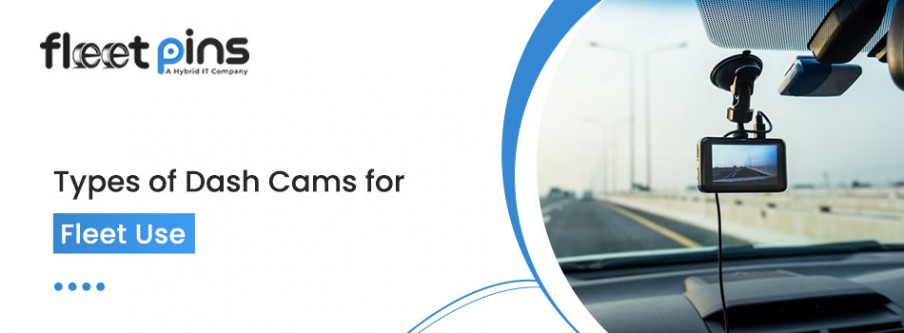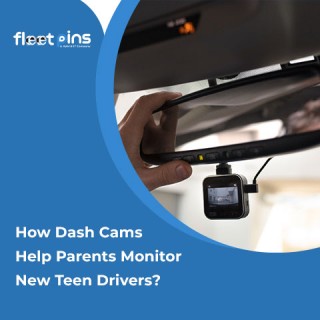
- On 2024-07-25
Types of Dash Cams for Fleet Use
Dash cams have become increasingly important in fleet management, providing numerous benefits such as improved safety, liability protection, and enhanced driver accountability. With a variety of dash cams available, it’s crucial to understand the types and their respective features to choose the best option for your fleet. This article provides an in-depth look at the different types of dash cams, their advantages, and their ideal applications.
Understanding the Different Types of Dash Cams
Here are the multiple types of dash cam
Single-Lens Dash Cams
Single-lens dash cams, also known as forward-facing dash cams, are the simplest and most common type of dash cam. These devices are designed to record footage from the front of the vehicle, capturing everything that happens on the road ahead. This type of camera is particularly useful for documenting traffic incidents, collisions, and any other events that occur in the vehicle's path. The footage can serve as crucial evidence in the event of an accident. Further helps to clarify the sequence of events and potentially exonerate drivers from false claims.
The affordability and straightforward installation process of single-lens dash cams make them a popular choice for fleets. Fleets that need basic surveillance without additional features. However, their major limitation is the inability to record activities inside the vehicle or from other angles. This means that incidents occurring to the sides or rear of the vehicle, as well as the driver's behavior, are not captured.
Advantages:
- Cost-effective and simple installation.
- Effective for recording incidents in front of the vehicle.
- Useful for monitoring driver compliance with traffic laws.
You May Also Read: Why Dash Cameras Are Essential for Fleet Management | FleetPins
Dual-Lens Dash Cams
Dual-lens dash cams provide a more comprehensive view by featuring two cameras: one that faces the road and another that faces the interior of the vehicle. This dual-camera setup allows for the monitoring of both external road conditions and internal activities, making it especially useful for fleets that prioritize safety and accountability.
For instance, the interior camera can record interactions between drivers and passengers, monitor driver behavior, and ensure compliance with safety protocols, such as seat belt usage. This type of dash cam is invaluable in situations involving passenger transport, such as taxis, ride-share vehicles, or buses, where interactions inside the vehicle could be pertinent to security and liability.
Advantages:
- Provides a fuller picture of incidents, both outside and inside the vehicle.
- Helps in monitoring driver behavior, ensuring compliance with company policies.
- Useful for protecting against false claims, especially in cases involving passengers or cargo.
Multi-Lens Dash Cams
Multi-lens dash cams are the most advanced option, featuring three or more cameras to cover various angles, including front, rear, and side views. This comprehensive coverage is crucial for large vehicles like trucks and buses, where blind spots and rear visibility can be significant concerns.
Multi-lens dash cams not only enhance safety by monitoring all around the vehicle but also help in documenting incidents that might not be visible from a single or dual-camera setup. This all-around surveillance can prevent accidents, deter theft, and provide indisputable evidence in the event of disputes.
Additionally, some multi-lens systems come integrated with GPS tracking and telematics, providing detailed data on vehicle speed, location, and driving behavior.
Advantages:
- Comprehensive coverage, reducing blind spots, and improving overall security.
- Useful for large vehicles where full visibility is critical.
- Enhances fleet management capabilities with integrated GPS and telematics.
AI-Powered Dash Cams
AI-powered dash cams represent the cutting edge of dash cam technology. These systems use artificial intelligence to analyze footage in real-time, identifying and responding to potential hazards. They can detect behaviors such as distracted driving, harsh braking, or unsafe lane changes, alerting the driver and providing valuable data to fleet managers.
Some AI-powered dash cams also recognize traffic signs and signals, further enhancing safety by helping drivers adhere to road rules. The real-time analysis capability of these cameras can significantly reduce accidents and improve overall driver performance, making them an attractive option for fleets prioritizing safety and efficiency.
Cloud-Connected Dash Cams
Cloud-connected dashcams store footage and data in the cloud, providing fleet managers with remote access to video and analytics. This capability is particularly useful for large fleets, allowing centralized management and quick responses to incidents. Cloud storage ensures that data is secure and accessible from anywhere, which is vital in cases of theft, accidents, or disputes.
Furthermore, these dashcams often feature live streaming, which can be invaluable for monitoring real-time situations. Additionally, there may be ongoing costs associated with cloud storage and data usage. Nevertheless, the benefits of real-time monitoring and remote access make cloud-connected dashcams a powerful tool for fleet management.
Choosing the Right Dash Cam from FleetPins
Choosing the right dash cam from Fleetpins extensive range can significantly enhance the safety and efficiency of your fleet operations. Whether you need basic front-facing cameras for straightforward monitoring, dual-lens models for capturing both road and in-cab activities, or advanced multi-lens systems for comprehensive coverage, FleetPins offers a variety of options tailored to meet diverse needs.
Consider factors such as vehicle type, desired features, and budget to select a dash cam that not only fits your operational requirements but also provides reliable, high-quality footage for better fleet management and driver safety.
You May Also Read: How to Choose the Right Dash Cam: A Comprehensive Buying Guide
Conclusion
Selecting the right dash cam for your fleet depends on your specific operational needs, budget, and the types of vehicles in your fleet. By understanding the strengths and limitations of each type, fleet managers can make informed decisions that will improve safety, efficiency, and accountability within their operations. Investing in the right dashcam technology is not just about compliance or protecting assets. It's also a proactive step toward fostering a safer and more responsible driving culture within your fleet.




